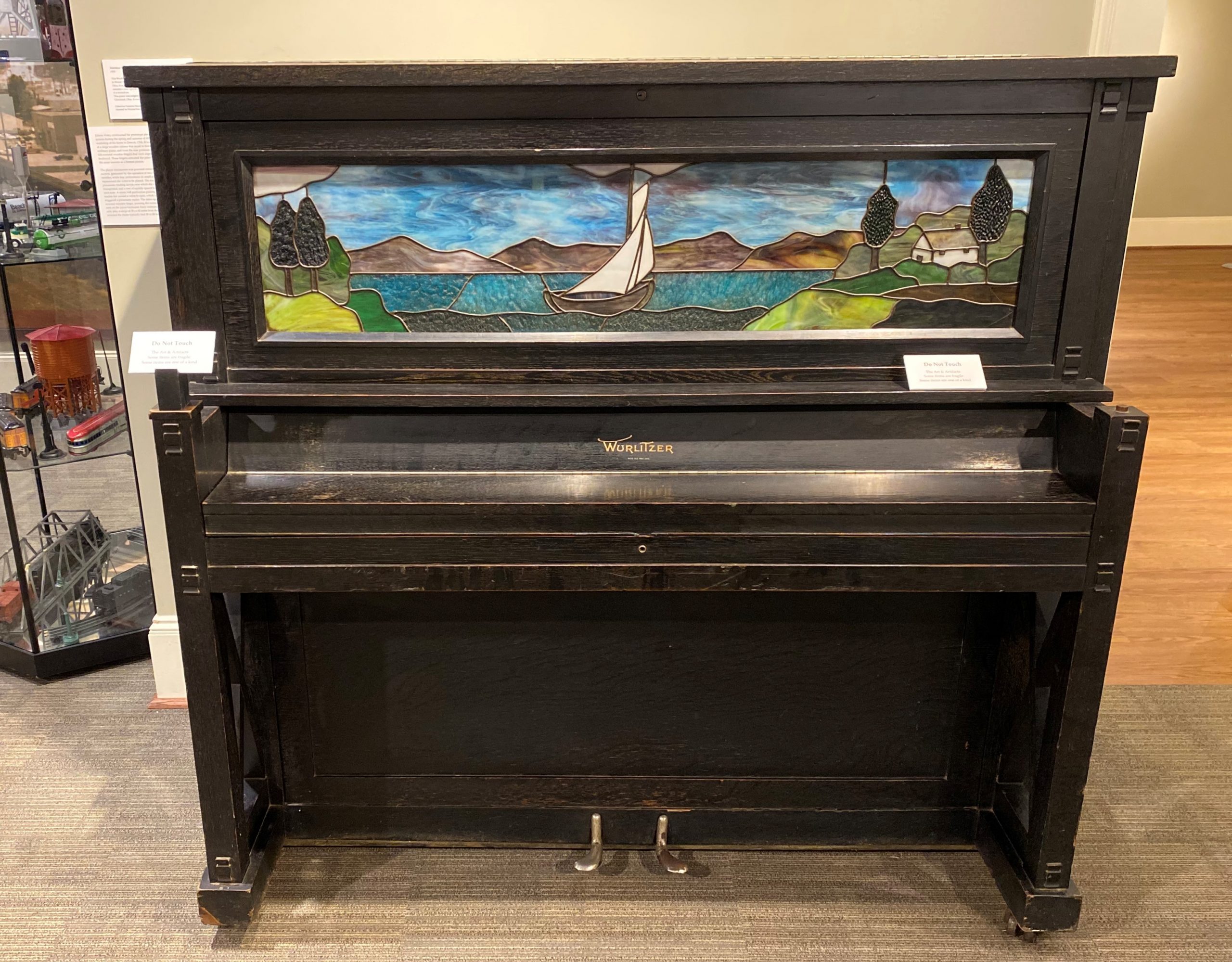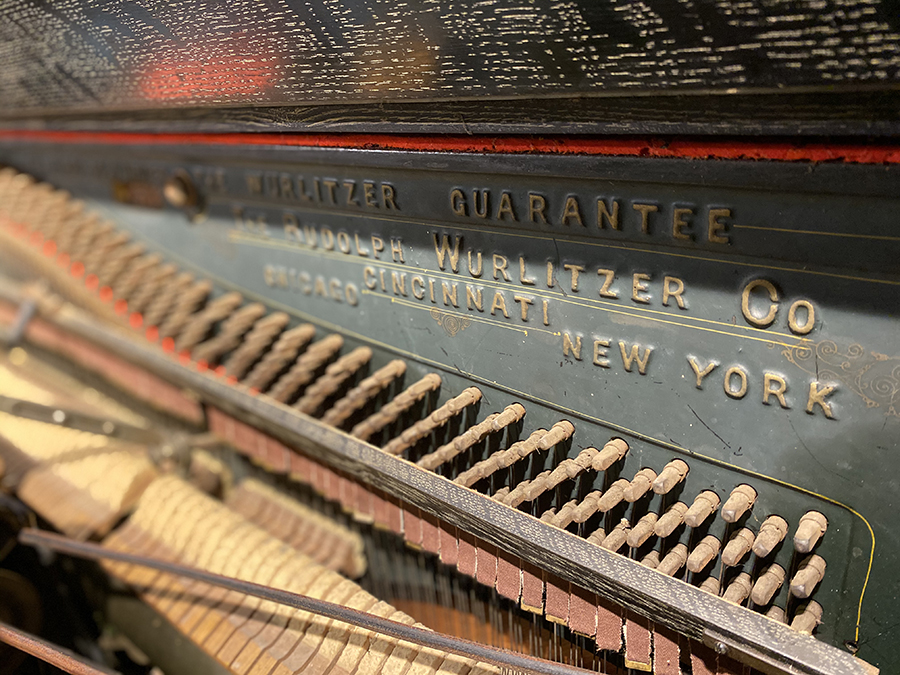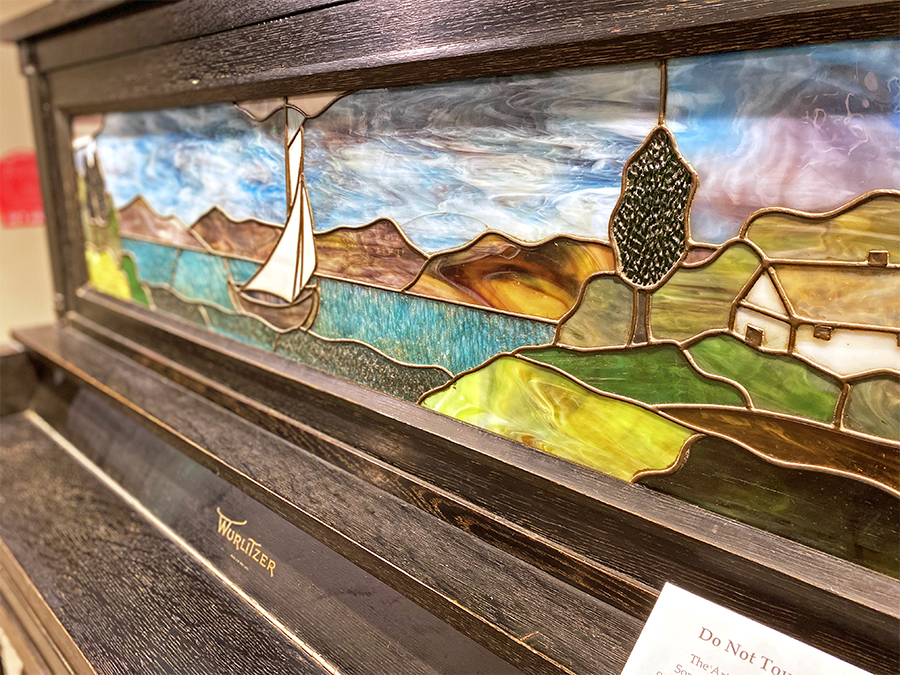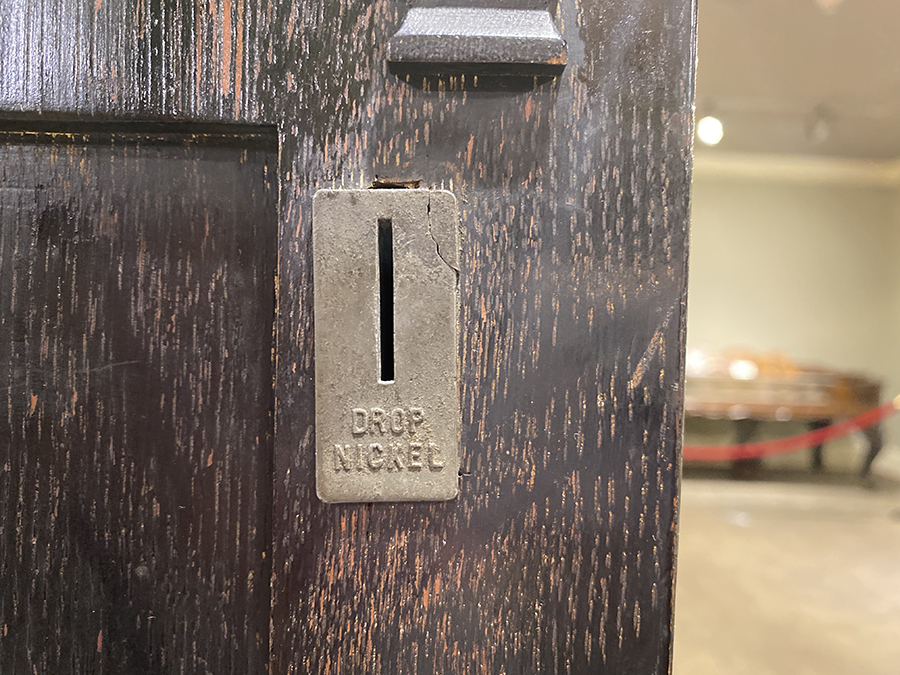
Written by Meghan Gattignolo, Visitor Services Coordinator
*Note: this item is no longer in the Museum’s collection.*
A future visit to the Customs House Museum & Cultural Center may include the playful plinks of piano music resonating through the galleries. We recently accepted a donation to our permanent collection by Patricia Eisenmann Donahue; an original 1910 Wurlitzer Nickelodeon Player Piano.


Built in Cincinnati, Ohio before World War I, this player piano stood in the Tivoli Café and Grill in Cleveland. In its heyday, Wurlitzer pianos and organs were the height of musical technology. If you attended a movie theater or music hall during the first half of the twentieth century, chances are you would see a Wurlitzer organ. Even without Facebook ads or television, most people of the 1920s would recognize the name Wurlitzer. The name was almost synonymous with pianos and organs.
Rudolph Wurlitzer immigrated to the United States from Germany in the mid-nineteenth century, bringing with him a deep family history of creating beautiful musical instruments. Wurlitzer started his business with importing his family’s instruments, but eventually moved to manufacturing in the US. Wurlitzer had a penchant for combining music with ever-changing technology, and competed early on to build the best jukebox. Their timeless machines can still be found around the country. Nickel-operated, or nickelodeon, musical instruments and phonographs were very popular precursors to the jukebox.

The piano is nestled at the foot of the stairs on the Museum’s Lower Level, near the Huff & Puff Express Model Train exhibit. A beautiful dark oak instrument with a polychromatic stained-glass window above the keys, it’s difficult to ignore as you walk by. Mrs. Donahue inherited the piano from her father, but it was originally owned by her great-uncle Rudolph Eisenmann, owner of the Tivoli Café and Grill, from the mid-1910s to the 1930s. Mrs. Donahue’s Uncle Rudy managed to burden himself with gambling debt, offering his Wurlitzer as collateral in exchange for help from his father. While the debt was never repaid, at least the piano stayed in the family. The piano was brought to Tennessee in the 1980s and kept in excellent condition through the years. Aside from the modification of an electric motor in the mid-1970s, the rest of the piano is original. The mechanism that is required to activate the piano when a nickel is inserted does need to be repaired before it can be used, but other than that the piano is in fantastic shape for its age – a well-cared for and appreciated family heirloom.


A silent museum allows for calm contemplation, but music can enhance the experience, too. The Lower Level of the Museum is rarely silent anyway, with the model trains clacking along their tracks and the echoes of voices from the floors above. Perhaps some piano music will add to the enjoyment while you absorb yourself in the fine art and wander through the 1840s Powers Log Home. Imagine enjoying a meal at the Tivoli Café and Grill a hundred years ago, excited to see this piano and get to play a song of your choice in a world without streaming music.
Special thanks to Patricia Eisenmann Donahue
References:
https://antiquepianoshop.com/online-museum/wurlitzer/
https://www.atos.org/wurlitzer-company

Meghan Gattignolo
Meghan Gattignolo is the Customs House Museum & Cultural Center’s Visitor Services Coordinator and regularly contributes articles to the Museum’s blog. From a military family, Meghan has spent most of her life in Clarksville. She loves learning about Clarksville’s history and writing. Meghan holds a B.A. in History from Austin Peay State University, with minors in German and Political Science. She lives in Clarksville with her husband and two daughters.
Maegan Collins, Media & Communications Coordinator, prepares photographs and visual images as well as prepares the blog posts for the web.